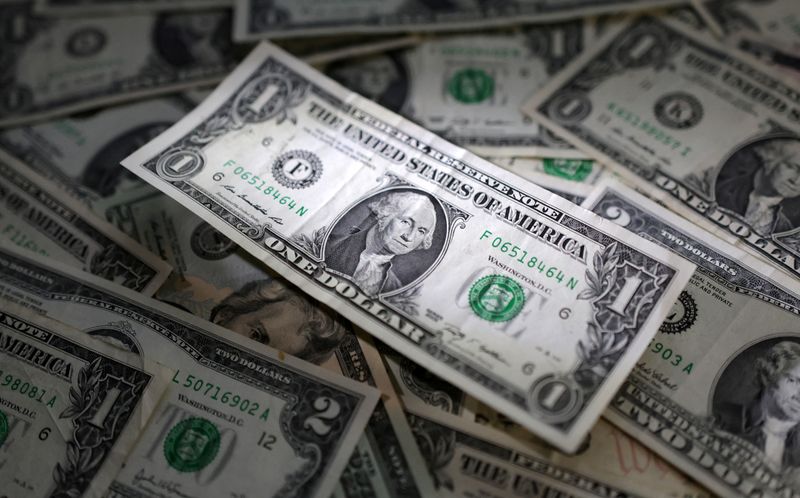Euro and pound edge back towards multi-month highs
By Rae Wee and Alun John
SINGAPORE/LONDON (Reuters) - The euro and pound nudged higher on Tuesday, as a pause in the rise in oil prices helped them back towards their multi-month highs on the dollar hit in recent sessions.
The big picture remained shaped by rapidly approaching prospective U.S. rate cuts, which have pressured the dollar in recent weeks. Investors see a rate cut at the Federal Reserve's September meeting as all but certain, but continue to debate the possibility policymakers will jump in with a 50 basis point cut instead of 25.
The euro and sterling rose about 0.1% each to $1.1169 and $1.3203 respectively, with the common currency just off Monday's 13-month top, and the pound around last week's over-two year high.
Both, particularly the euro, have been major beneficiaries of the recent bout of dollar weakness, though may struggle to move higher from here.
"After a strong rally since early August, it looks euro/dollar could be due some consolidation. We would favour a 1.1100-1.1200 trading range for now – waiting for some US activity data to disappoint," said Chris Turner global head of markets at ING, in a note to clients.
"The run-up in oil prices on the back of increased Middle East tension and Libyan supply challenges will not be helping (the euro against the dollar)," he added.
Oil prices paused recent advances to trade in a range on Tuesday, after a surge of more than 7% in the previous three sessions, on supply concerns prompted by fears of a wider Middle East conflict and the potential shutdown of Libyan oilfields. [O/R]
One currency boosted by the surge in oil prices is the Canadian dollar, last at C$1.3479 to the dollar having touched a five-month peak on Monday.
The yen was weaker with the dollar up 0.3% at 144.95 per dollar.
That all left the dollar index at 100.88 just off a one-year low helped by the likelihood of a U.S. rate cut in September after Federal Reserve Chair Jerome Powell more or less nodded to such a move in his Jackson Hole speech on Friday.
San Francisco Fed President Mary Daly also said on Monday a quarter-percentage point reduction in borrowing costs next month was likely.
"The question now is no longer whether the Fed is going to cut in September but by how much," said David Chao, Invesco's global market strategist for Asia Pacific ex-Japan.
"Powell left the door open for larger cuts in case labour conditions deteriorate. Investors believe that the Fed appears to be open to cutting rates faster than previously expected."
Markets have already fully priced in a rate cut next month, and see about 100 basis points worth of easing by the end of the year.
Elsewhere, the Australian dollar gained 0.23% to $0.6787, not far from a one-month high of $0.67985 hit on Friday, and the Swiss franc was at 0.8473 per dollar around its strongest in three weeks.
Source: Investing.com
